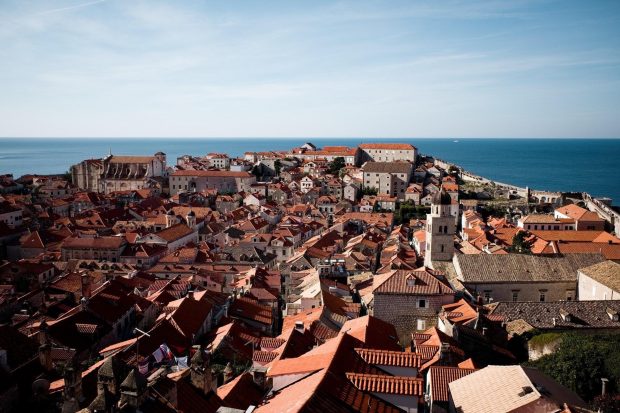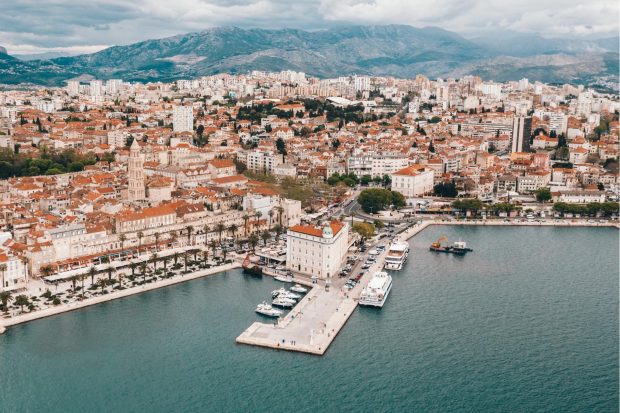7 Tips to Make the Most of Your Trip to Croatia
An unassuming, sun-glazed Adriatic country with all the charms of its neighbors, Croatia has always been in the shadow of Italy, Greece, Spain, France, and other beautiful European stops with access to the Mediterranean coast. Although all of them have their unique appeal, Croatia is slowly becoming a top destination for globetrotters eager to taste its genuine culture and natural wealth.


Old, coastal towns with pristine architecture spanning centuries into the past, a long coast with a number of emerald islands with easy ferry access, and national parks of immense beauty – these are just some of the main reasons making this little country so attractive. It’s timeless, yet modern, and you’ll find yourself getting equally lost in the busy streets of Zagreb, and mesmerized by the scenery as you travel from Dubrovnik to Split in Croatia to see its finest UNESCO heritage sites along the way.
Simply put, Croatia has it all, for the city-dwellers eager for that beehive vibe, but also for the solitude-seekers wanting to get away from it all. To avoid getting side-tracked by the many amazing tours and opportunities available (and believe me, it’s so easy to overbook your itinerary and then not do the things you want the most), this guide will help you make the most of your trip to Croatia!


Split, Croatia, Source
Take the scenic road from Split to Dubrovnik, Croatia
Dalmatia is one of the most stunning regions on the Adriatic coast, and it’s home to a number of famous and historic places that will give you a taste of what Croatia is all about, including Split and Dubrovnik. The architecture and historic wealth of Dubrovnik alone are more than enough to keep you busy for days on end. There’s even a seven-day Game of Thrones tour that is much more about Croatia than the show itself, and it can be a great way to experience multiple destinations in one go.
However, for the solo traveler and the explorers who like to take things at their own pace, a road trip in a rental car spanning from Split to Dubrovnik will allow you to see the best of both towns, all the major historic spots, and take your time checking out the restaurants. Stop to see the Roman ruins of Diocletian’s Palace in Split, and take a stroll on the medieval walls of Dubrovnik. You’ll feel as if time has stopped.
Dubrovnik, Croatia, Source
No better place for island-hopping than Croatia
Have you settled in nicely in Dubrovnik or Split from your road trip? Good, because that’s your perfect opportunity to hop over to Hvar, Croatia’s most famous and one of the most beautiful islands. Hvar, Split, and Dubrovnik are the golden trifecta for first-time travelers to Croatia, as they offer the perfect combination of old-town charm, seaside relaxation, and superb nightlife.
Aside from the enchanting Hvar, you should make some room in your itinerary for other Croatia’s islands, like Krk, Vis, and Brač. You’ll find that there are beaches commonly visited by tourists, but with the right vessel, you can also explore off the beaten path and see some of the more hidden, secluded beaches, too.
Hvar, Croatia, Source
Set sail and go offshore in Sukošan
On that note, since Croatia is well-known for its unparalleled coast, a mixture of sandy and pebble-covered beaches, with pine trees creating perfect shade at every turn, you can make the most of your trip by going offshore.
Another small town in Dalmatia worth adding to your bucket list, Sukošan, is brimming with yachts for charter that can help you get to the remotest, most romantic alcoves on the nearby islands. This region around Zadar is also packed with islands of various sizes, including Dugi otok, Ugljan, and Pašman, all with wonderful beaches you can explore with a vessel of your own.
Reserve a few days for hiking in Paklenica
The coast in Croatia isn’t the only alluring aspect of this majestic country. If anything, its mountains, national parks, and hiking trails are equally mesmerizing. One such spot for every eager hiker would be the famous Paklenica, riddled with dramatic canyon views and truly challenging and awe-inspiring.
Paklenica National Park hides around 200km (around 124 miles) of spotless walking and hiking trails. Its pine forests grant it an even more striking view, and you can also visit the cave Manita peć. This is a truly unique opportunity for you to escape the busy city streets and the hustle and bustle of the small, coastal towns. It’s one of those rare places, still undisturbed and intact enough to help you reconnect with Mother Nature.
Paklenica, Croatia, Source
Don’t miss out on the culinary wonders
A country of wine, sublime Mediterranean seafood, and rich, meat-packed gastronomic pleasures inspired by the Balkans, Croatia is far from your typical “avocado on toast” kind of place. Sure, you’ll find the brunch hotspots in Zagreb, but what you should really pay attention to is the blend of these cultural influences.
Depending on where you are at any given time, you’ll find that some coastal places love to experiment with seafood and local wines, but you’ll find more variety inland. The famous Croatian “peka” means preparing meat (such as veal or lamb) with different veggies over an open fire, outdoors, and the pot should be covered with embers and coal. It can come in that seaside version, with octopus and olive oil, among other delicious things.
As for dessert, Croatian pastries “fritule” are a true delight, and even though they are considered a holiday specialty, you’ll find them prepared all year long. They come in a range of flavors, often combined with raisins, grated orange or lemon, and perhaps a touch of local rakija.
Food, Croatia, Source
Get creative with your accommodation
The culture in Croatia is a unique blend of its Mediterranean and Balkan influences, all welcoming, warm, exuberant. Although the hotel scene is well-developed, and you can also find affordable hostels and boutique hotels, especially on the coast, Croatia’s authentic hospitality invites you to do this a little bit differently.
Couchsurfing is common, so is camping in the designated areas for the activity, but you can also leverage Homestay in Croatia to meet the locals and get their advice on the latest and most relevant event you can enjoy. They’ll also point you towards the best eateries, so you’ll get to experience the country alongside the locals.
Avoid taxis – use ferries, buses, rental cars
Croatia might be a small country, and it’s relatively easy to get from one place to another, but you should be mindful of potentially expensive adventures that could affect your budget for the more important things on your agenda. For example, taking a cab is advisable only in an emergency.
They’re expensive, and most cities are so well-connected that they’re redundant. Not to mention that everything is likely within walking distance, or at least most of the places you want to see where you’re staying. In cities like Zagreb, cycling is another brilliant way to get around!
The Flixbus buses are comfortable, affordable, and they make it easy for you to explore the whole country. Add to that, ferries can easily get you from the mainland to different islands – just make sure to ask for an updated schedule to know when they’re available. If you’re up for a ride, rental cars are fairly common and affordable, too, so if you’re planning for a road trip, there’s your opportunity!
Zagreb, Croatia, Source
The practical aspects of this guide are meant to help you make the most of your stay both financially and time-wise. With more time on your hands to spend on quality activities, relaxation, and exploration, you don’t have to worry about missing out on anything during your stay. Like most places in the world with such a rich and diverse heritage, it’s impossible to see it all during a single stay, unless you’re planning to remain there for several months.
Also, keep in mind that the summer season can be quite crowded when the pandemic is over, and it’s best to see Croatia just before and after the peak of the season, in late May/early June, and in September. You’ll benefit from that lovely Mediterranean weather while avoiding the chaos of packed buses and busy restaurants.
Hopefully, you’ll find enough information here to cover the fundamentals for your trip to Croatia, and to create a plan that will get you to your bucket-list spots – but even more so, that will allow you to enjoy those spots fully immersed in their beauty and uniqueness.